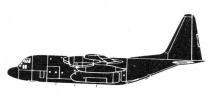Incident Overview

Description
After engine servicing at Nrnberg, Learjet 35A I-MOCO was prepared to return to Rome. The airplane, with two pilots and the chief technician of the operator on board, took off from runway 10 at 15:31. After five nautical miles the aircraft turned to the south. Less than three minutes after departure at an altitude of 5900 feet and an airspeed of 250 knots, the no. 1 engine failed. The captain decided to return to the airfield. Preparing for the approach to runway 10, the flaps were set at 8 degrees and the landing gear was extended. Because the aircraft was above the glideslope, power was reduced to idle and the flaps were lowered to 20 and a little later further down to 40 degrees. At that moment the airspeed dropped considerably. The thrust lever of the remaining right hand engine was then advanced to near takeoff power. Due to the asymmetric thrust the plane yawed to the left at a height of 200-300 feet. The captain ordered the first officer to raise the flaps back to the 20 degree position. The Learjet then stalled to the left, rolled inverted and crashed into trees. PROBABLE CAUSE: “The accident was caused by an in-flight failure of the left power plant appr. 3 minutes after take-off and an inadequate conduct of the subsequent single-engine land procedure so that in short final the airplane stalled and crashed from low height. The failure of the left engine was caused by intergranular fractures of retention posts on the high pressure turbine disk. As a result of incorrect service life recordings the maximum number of cycles had considerably been exceeded.”
Primary Cause
Failure of the left power plant due to intergranular fractures in retention posts on the high-pressure turbine disk.Failure of the left power plant due to intergranular fractures in retention posts on the high-pressure turbine disk.Share on:




